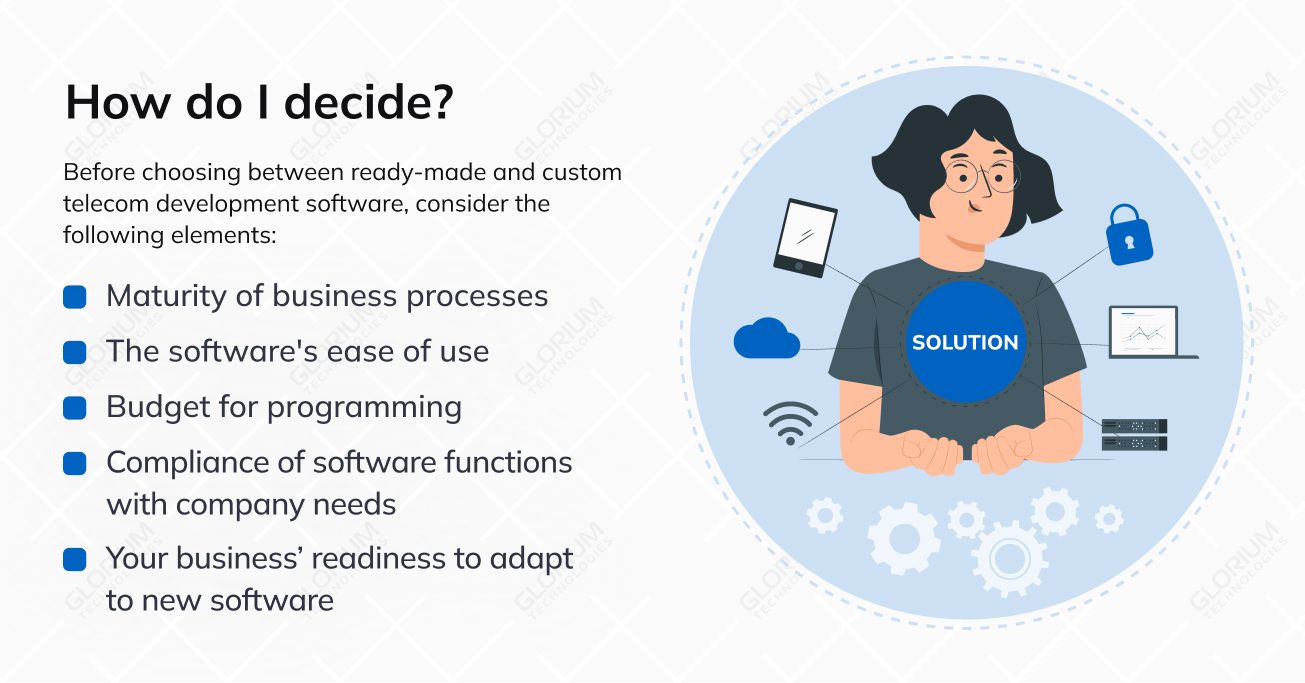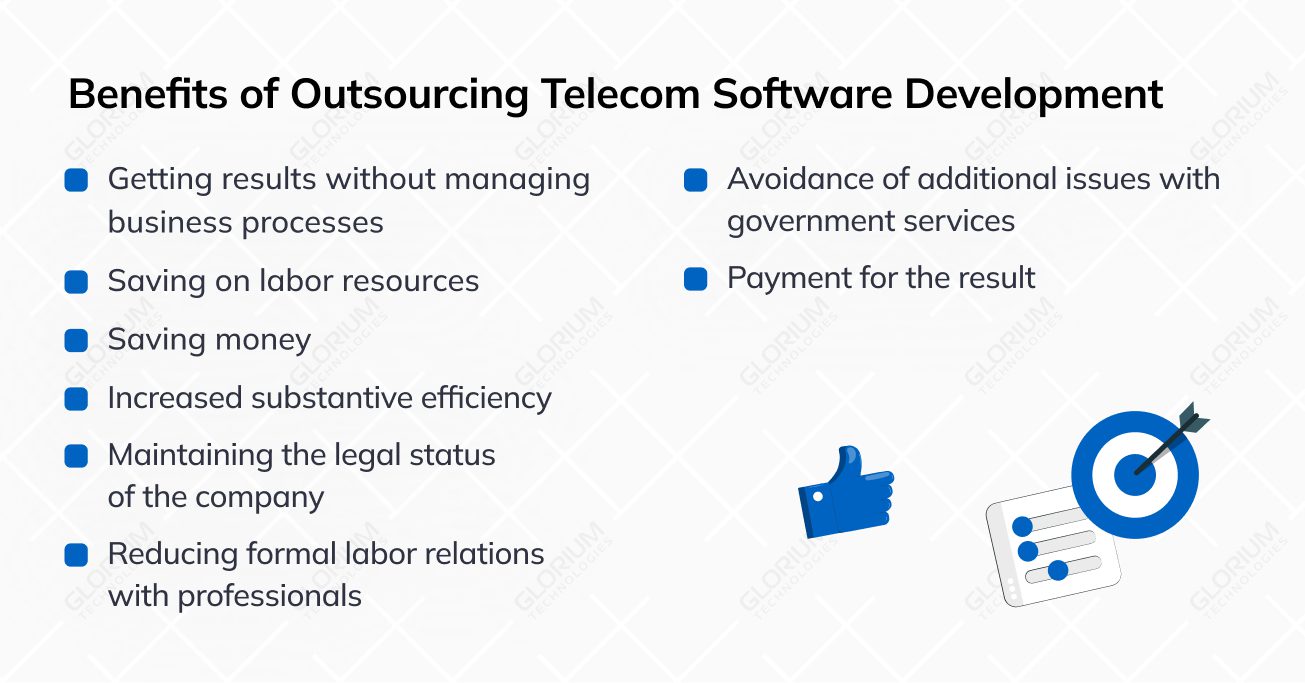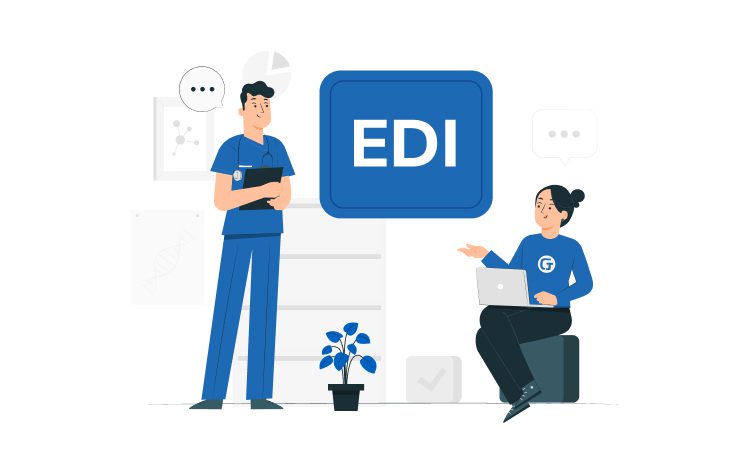
Telecommunications Software Development: a Complete Guide



Telecommunications technology has become commonplace. Every time you unlock your smartphone, it starts performing several actions. We order takeout – our gadget sends a request to the company’s server and receives a response. We make payments – our devices connect us to banks through telecommunications networks.
Content
Let’s explore the latest trends in telecom software development, which are shaping the future of how we communicate and manage networks.
Software-Defined Networking and Network Function Virtualization
A pivotal trend in the telecom sector is using Software-Defined Networking and Network Function Virtualization. These technologies are revolutionizing telecom networks, transitioning from traditional hardware-based systems to agile, software-driven solutions.
AI and Machine Learning Integration
Integrating artificial intelligence (AI) and machine learning into telecom software is another significant trend. This integration is transforming various aspects of telecom operations:
Low-Code and No-Code Development
Implementing low-code and no-code platforms is a game-changer in telecom software development. These platforms democratize the creation of applications by:
Telecom APIs
Developing Application Programming Interfaces (APIs) for telecom services is a trend opening up new vistas for collaboration and innovation. These APIs allow:
Big Data and Analytics
The telecom industry is a goldmine of data, and leveraging big data analytics is crucial for strategic decision-making. Telecom companies are investing in software to:
Blockchain for Telecom Development
Blockchain technology, which is famous for its security and transparency, is starting to find applications in the telecom industry:
Telecom software development for businesses is rapidly expanding. Today, you can get both off-the-shelf and custom software solutions designed to fit the demands of companies in a specific industry.
Custom software development is a one-of-a-kind solution tailored to the needs of a specific customer. The off-the-shelf solution is a standard product built for a variety of organizations.
For typical items with well-established business procedures, off-the-shelf software is ideal. It is also appropriate for market testing and piloting when it is unclear whether the idea will fly.
Organizations that want to grow and scale up should use something other than off-the-shelf solutions for their primary business direction. Staying among the market leaders requires constant changes and new services. The business focuses on flexibility and scalability, and “boxed” solutions for these items fail.
The standard solution comes ready-made; it does not allow you to apply changes or add new features.
When is your business suitable for a “ready” software solution?
Let’s learn more about an off-the-shelf solution’s advantages and disadvantages.
| Quick start Only 2-3 months to launch |
Lack of control Due to pre-existing software |
| Minimum in-house development Only back-end support needed |
Compatibility Not always meeting your needs |
| Simple implementation No significant effort required |
Scalability. The solution’s capacity & your expansion plans may not match |
| Cost saving Price starting from $1K |
Higher long-term costs For upgrades and so on |
A custom solution is a program designed for a specific company with specific business processes.
Developing software is preceded by a long and meticulous process of analytics. The success of business automation largely depends on its result.
| Unique solution Meeting all your business needs |
Higher development costs As you create a new solution from scratch |
| Flexibility Your solution will grow with your company |
Slow start Business analysis and development require more time |
| Security Own code and data protection |
Maintenance and support Requires effort from your team |
| Compatibility You adapt the solution’s integration ability |
Glorium Technologies offers a wide range of tailored telecom software solutions, encompassing both operational and business support systems, along with data-driven solutions.
Glorium Technologies specializes in developing and modernizing Operations Support Systems (OSS) for the telecom sector. Our solutions encompass performance monitoring and management tools, essential for maintaining optimal network functionality. We provide sophisticated trouble ticketing tools to efficiently manage network issues.
Our expertise also extends to developing comprehensive network resources inventory management solutions, ensuring effective tracking and deployment of network resources. Additionally, Glorium Technologies excels in creating advanced billing management software, fraud protection systems, and fault management solutions, all designed to enhance operational efficiency and service reliability in telecom operations.
Our expertise in Business Support Systems (BSS) includes developing integrated Customer Relationship Management (CRM) systems, tailored to the telecom industry’s unique needs. We design and implement Enterprise Resource Planning (ERP) systems, streamlining business processes and resource management.
Our portfolio also features the development of effective task and document management tools, billing and accounting solutions, and subscription plan management systems. Moreover, Glorium Technologies is adept at creating corporate portals and personnel management tools, along with custom web and mobile applications, all aimed at automating and enhancing business operations in the telecom sector.
Glorium Technologies focuses on providing data-driven solutions to empower telecom businesses with informed decision-making capabilities. We develop robust telecommunications data management systems to handle vast data volumes efficiently. Our data visualization tools are designed to simplify complex data analysis, enabling clear and actionable insights.
We specialize in creating customizable reports generation software and predictive analytics solutions, providing telecom businesses with forward-looking perspectives. Our expertise also covers data mining, processing solutions, and data warehousing cost optimization, ensuring comprehensive data management and analysis tailored to the telecom industry’s needs.
How do I decide? Before choosing between ready-made and custom telecom development software, consider the following elements:

It is critical to strike a balance between achieving consumers’ expectations and creating a wow effect. The app can become a brand’s “digital actor,” bringing in new customers and making it stand out from the competition.
Ownership of code and independence from third-party developers reduces risks. When selecting a custom solution, the customer owns the code. When employing the box solution, you are merely renting it. Marketing draws clients to a platform the organization cannot control or influence.
Outsourcing development allows for the precise transfer of code and documentation. It even allows the training of customer personnel for development and operation when the project is in-house. Only you will have access to your customers’ behaviors and business information.
Additional external integration, such as technical support, will be impossible or prohibitively expensive if you choose an off-the-shelf solution. A custom application’s average development and output time are 2-3 weeks. You can implement minor urgent enhancements (for example, holiday design modifications) in a few days.
Start by identifying the specific challenges and operational needs within your telecom context. Define clear objectives for what the software should achieve, like improving network efficiency or enhancing customer service. Consider both immediate needs and long-term goals. This step is crucial for guiding the entire development process.
Understand and adhere to the relevant telecom industry standards and regulations to ensure compliance. Stay informed about emerging technologies and trends like AI, blockchain, and NFV/SDN that can benefit your software. Research helps in making informed decisions about software features and capabilities. Ensuring compliance avoids legal and operational issues down the line.
Select the appropriate technologies for both front-end and back-end development, considering factors like performance, scalability, and integration capabilities. Back-end choices might include databases and server technologies, while front-end decisions focus on user interface and experience. Scalability ensures the software can grow with your needs. Integration capabilities allow for seamless operation within existing telecom ecosystems.
Decide whether to use an in-house team or outsource to external experts based on your project’s complexity and resource availability. Ensure the team includes diverse roles such as project managers, developers, QA engineers, and UX/UI designers. Consider the expertise needed in telecom-specific software development. A well-rounded team is crucial for developing a robust software solution.
Design an initial prototype to visualize basic functions and user interface. Use this prototype to gather feedback from end-users and stakeholders. Iterative improvements based on this feedback are essential.
Perform thorough testing, including unit, integration, system, and user acceptance testing, to ensure the software’s reliability and performance. Agile methodologies facilitate adaptability to changing requirements. Rigorous testing minimizes bugs and enhances user satisfaction.
Carefully deploy the software in a controlled environment to monitor its initial performance and impact. Ensure seamless integration with existing telecom systems and infrastructure for uninterrupted services. Proper deployment minimizes operational disruptions. Effective integration enhances the overall functionality and efficiency of telecom operations.
Provide comprehensive training to users for effective software adoption and utilization. Training helps in maximizing the benefits of the new software. Continuous support enhances user confidence and software reliability.
Outsourcing telecom software development might be an excellent approach to saving time and recruiting professional specialists. External management usually benefits a business owner who decides to outsource specific procedures to contractors. Your project will go further by hiring an expert in your field.

Contractors are now in charge of performing critical functions. As a result, the client obtains the desired corporate result through external activities.
Because partner takes on certain business operations, the company no longer needs to employ people to oversee them.
Fewer employees mean reduced wage bills. It also reduces the cost of social subsidies and tax payments.
Removing non-core functions means focusing on the main goal and boosting its efficacy.
If you replace the employees with contractors, the company will still meet the criteria for a small business, even if it has many employees.
The contracting company formally employs workers, accountants, lawyers, and other professionals. If the specialist is unhappy, he can only complain to his boss. The client pays the agency for services but does not need to manage people.
Another organization is responsible for employees; therefore, in-house personnel checks do not affect the corporation.
A full-time employee is paid to sit “from call to call” and complete the bare minimum of work. An outstaffer gets paid exclusively to do a specific task for the organization.
Supposing you choose custom development. What should you do next?
There are an increasing number of outsourcing companies on the market. They provide nearly identical services and talk about similar topics on their websites. They are all “leading,” “experienced,” and “renowned” and guarantee an “unprecedented advantage.” So, how do you pick professionals?

Before making a final decision, visit the company’s website and become acquainted with its method and the number of case studies. The portfolio typically reflects the company’s experience and project skills. If you can’t discover this information, it could be because the company or its clients weren’t happy with the completed projects. Keep on looking.
The difficulty is, where do you look for the proper one? Clutch.co can help you here. This website enables software companies to showcase their previous work and accomplishments.
Read the feedback left by customers on the company’s website, discussion forums, and social media. Check to see if prior clients were pleased with the process’s efficiency and the end outcomes. This information will provide you with a better understanding of what to expect.
Before contacting potential performers, write a clear technical assignment with a workload. Decide what you will outsource to telecom software developers and what work you can do independently.
It’s your responsibility to set the goal of the work and find the best solution. You can start by answering a few questions: What is your specific need? What is your potential solution? The answers to these questions lead to
Before contacting an outsourcing partner, determine how much money you want to invest in your project. Then tell potential partners your budget.
Evaluating potential partners on the following criteria:
Do not choose a company whose stack is limited to a few technologies. Practice shows that the more experience the company has in different software technologies, the better your project’s quality will be.
After finding companies that meet your requirements:
By closely analyzing market trends and understanding the unique needs of the medical community, Glorium Technologies can transform a concept into a cutting-edge digital solution.
In our recent case the task was to develop an extended social network platform for healthcare professionals. Originally envisioned as an AI-enabled, compliant tool for medical number and image recognition, our vision expanded to create a comprehensive “Google for medicine.” This platform offers specialized tools and provides the latest industry news, fostering a dynamic professional community.
Key Features and Technical Details:
Architectural Focus
The app’s architecture centered around four key activities: visualization, exploring, learning, and sharing knowledge. This focus ensured that the app was a tool and a comprehensive resource for the medical community to engage and grow professionally.
Impact and Outcome
Our project outcome was a multifunctional platform that went beyond a simple networking tool. It became a central hub for medical professionals to interact, access information, learn, and make informed decisions. By leveraging our expertise in AI, Big Data, secure messaging, and user-centric design, we delivered a product that redefines professional networking in the healthcare sector.
This project highlights our capabilities in crafting customized telecom software solutions that address specific industry needs while integrating advanced technologies. Our approach combines technical prowess with a deep understanding of user requirements, ensuring that each project we undertake is a technological triumph and a meaningful addition to the field it serves.
The Glorium team will perform the complex telecom software development services for the business at a high professional level.
The Glorium services include
We can help with software development. Our large team possesses different skills and can do complex tasks. We work quickly with apparent compliance with the customer’s technical assignment.
In telecommunications, software is used to organize and manage all aspects of electronic data exchange (text, voice, video, etc.).
Your business is suitable for an off-the-shelf software solution when the company has simple business processes; among the employees, there is someone familiar with the program; tight budget. Otherwise you need to choose custom software development.
Custom software development is a unique solution created for a particular customer’s needs. You can delegate the software development to the outsourcing company.
Check the company’s website and familiarize yourself with its process and the number of case studies. Check the reviews on Clutch. This site is the perfect place for you to find the best software developers. At the same time, it allows software companies to present previous work and achievements. In addition, read the company’s feedback – on its website, discussion forums, and social networks. Check whether previous clients are satisfied with the process’s efficiency and the final results. Doing this will give you a better idea of what you can expect.








